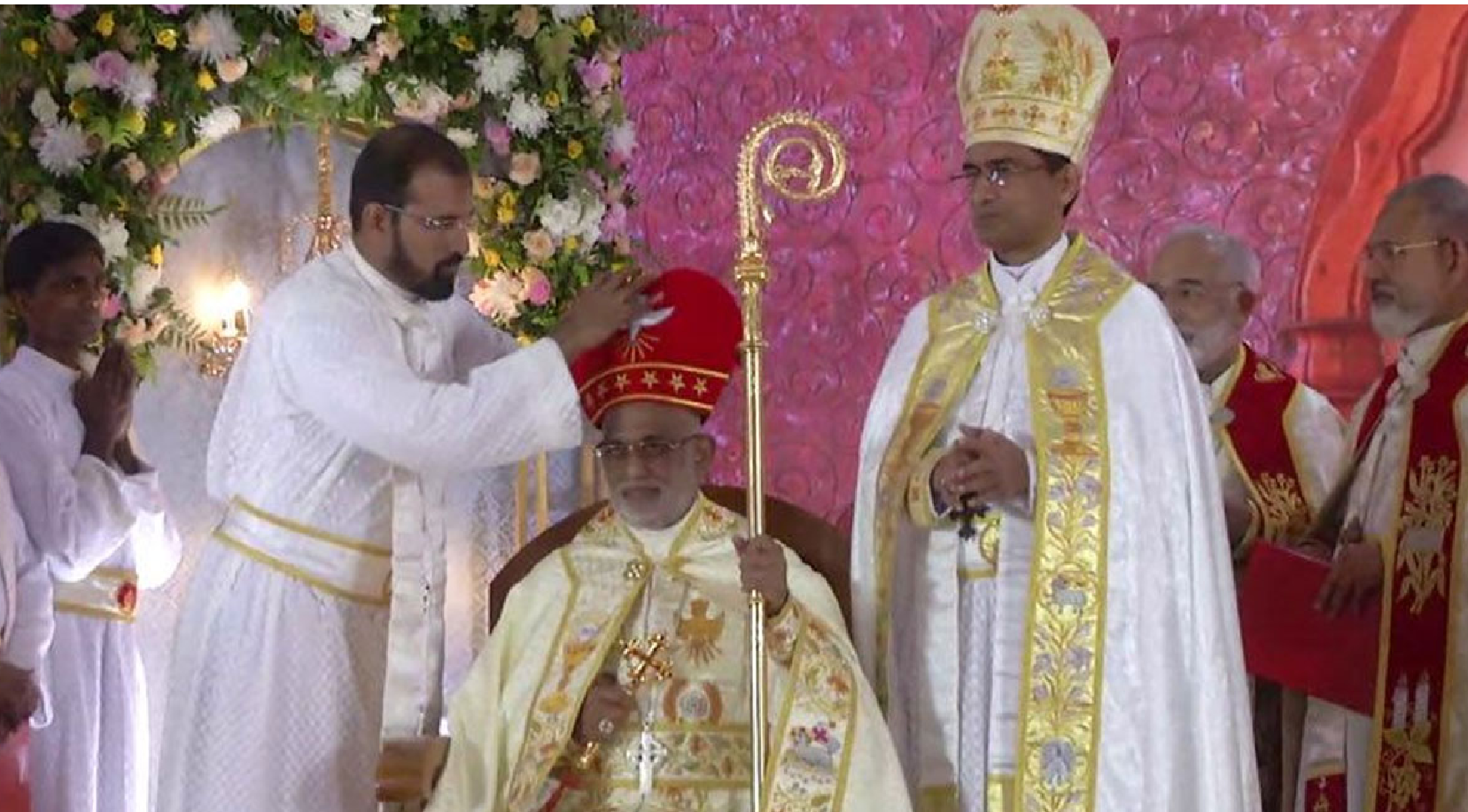(ZENIT News / Rome, 18.01.2024).- There are two great Christian communities in India that are part of the Catholic Church: the Syro-Malabar Catholics and the Syro-Malankara Catholics. They differentiate themselves from one another but also from the Roman Catholics by their Rite, namely, by the way they celebrate the Sacraments, especially the Mass.
The introduction of a new way of celebrating Mass led to a serious break in the Syro-Malabar Catholic Church. The diocese, where half a million Catholics are concentrated who follow this Rite (the Arch-Eparchy of Ernakulam-Angamaly), decided not to align itself with the decision taken by the community’s Synod in 2021 on the way of celebrating Mass (Holy Qurbana), which elicited the Pope’s intervention. Initially the Holy Father sent letters inviting to reconciliation and obedience, given the change in Arch-Eparchy’s Episcopal leadership. He also sent his own personal Delegate. However, in face of the constant negatives, including the rejection of the Papal Envoy, in December of 2023 the Pope gave them an ultimatum through a video on YouTube: the priests who did not respect the new regulation by December 25, 2023, would receive sanctions.
Earlier, on December 7, 2023, the Holy Father accepted the resignation of the leader of that Rite of the Catholic Church, Cardinal Mar George Alencherry, Major Archbishop of Ernakulam-Angamaly of the Syro-Malabars.
Thus the See of the Leader of one of the Catholic communities of Oriental Rite was without a head and afflicted by a serious division. As the warning to the 400 priests and dissident Catholics needed a follow-up, on December 11 Pope Francis received Bishop Cyril Vasil’, S.J., his Delegate, to put order in the matter. A few days later, Monsignor Vasil was to travel to India again either to follow-up the reconciliation or to implement the sanctions. He had already been there, specifically, in August 2023, but he was not well received. What has happened since then?
On January 9, 2024, the Synod of Bishops of the Syro-Malabar Catholic Church elected a new Major Archbishop. He is Raphael Thattil, 67, whose election was announced the following day, January 10, once Pope Francis granted him the Apostolic Communion through the “confirmation of election.” On Thursday, January 11, he took possession of the leadership of the community, which has some six million members worldwide.
Initially, the diocese of Ernakulam-Angamaly, epicenter of the liturgical conflict, received the appointment with hope. “We hope that Raphael Thattil will find a friendly solution to the present crisis and to other controversies that are tormenting the Church,” said Father Paul Chittinappilly, member of the Archdiocese’s Council of Priests. And he added: “We hope he will be faithful to his character, known for his good relations with everyone. No doubt he will be able to collaborate with the Synod’s permanent members, who are the Church’s Archbishops. He has very good relations with our Archdiocese. Many of our priests are his friends. He is in a good position to be able to find a solution to the crisis.”
There were those who adduced that the new Major Archbishop has a conciliatory style, and has not interfered in liturgical matters previously. This too would have played in his favour in the elections held at the headquarters of St. Thomas Mount in Kakkanad, in the South, in the Indian state of Kerala, elections in which 53 members voted.
However, for the time being things are like this: the clergy supported by the laity continues celebrating the Mass (Holy Qurbana) in the way the Synod of 2021 disapproved, and this is what keeps the conflict alive. Those half a million people continue asking that “their” way of celebrating the Mass be recognized as an extraordinary form of the Syro-Malabar Rite in that Archdiocese. They did do one thing, however: to “obey” the Pope, on December 25, deadline of the Pontiff’s ultimatum, the priests celebrated “Synodal Masses,” but after that day they returned to the previous form of the Mass.
The answer of the Apostolic Administrator of the Archdiocese, which is the epicenter of the conflict, came on January 15, 2024 with a letter urging that the Mass be celebrated as approved by the Synod. The letter was signed by 49 Bishops who attended the meeting in which Monsignor Raphael Thattil, the new Major Archbishop, was elected. The Archdiocesan Movement for Transparency (AMT), group leading the protests against the “new Mass,” responded by reaffirming itself in its position.
After the letter of the Apostolic Administrator, opinions also changed regarding the new Major Archbishop. “We had great hopes of the new Major Archbishop Raphael Thattil, who promised to listen to us and to find a friendly solution, but the Synod under his leadership has now adopted a different position,” said Riju Kanjookaran, the AMT’s spokesman.
For the time being, the Cathedral Basilica of Saint Mary, main church of the Archdiocese of Ernakulam-Angamaly continues to be closed. It has been so for a year already. The local Seminary has been closed for just over a semester; consequently there are pending Ordinations.
After the Ukrainian Greek-Catholics, the Syro-Malabar Church is the second most numerous Catholic Church of Oriental Rite in the world. Its origin goes back to the Apostle Thomas in the 1st century, and has spread especially in the South of India, in the state of Kerala. After centuries of separation from the Catholic Church, they returned to communion with the Pope in the 17th century. Following the 2021 decision regarding the change in the Rite of the Mass, 35 dioceses implemented it in November of that year. However, the Archdiocese with the largest number of Catholics, Ernakulam-Angamaly, was the only one not to implement it. If a schism were to be formalized, it would be the most important schism in the contemporary history of the Church in regard to the number of people implicated. Numerically speaking, this new schism can only be compared to that of the Lefebvrists.



